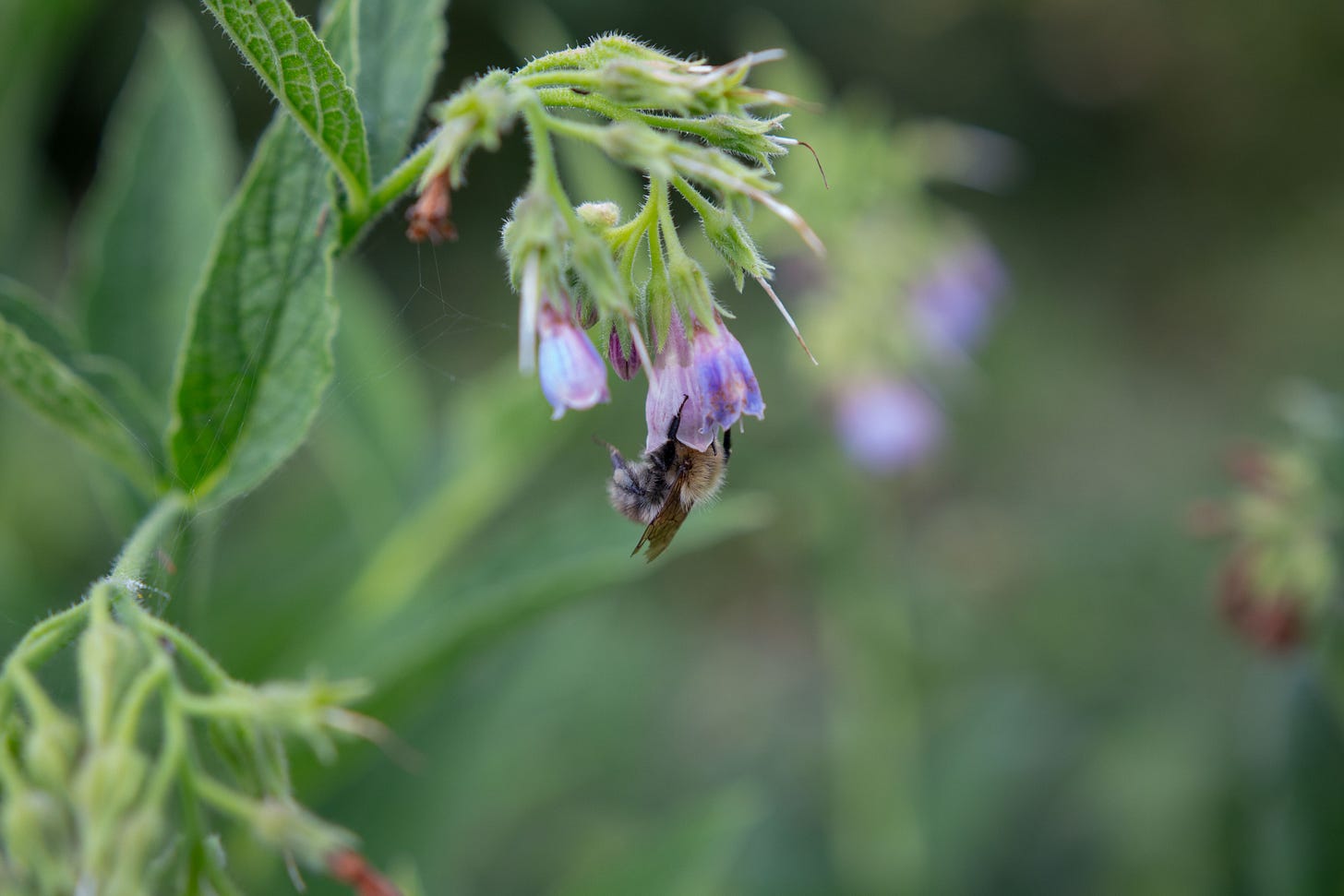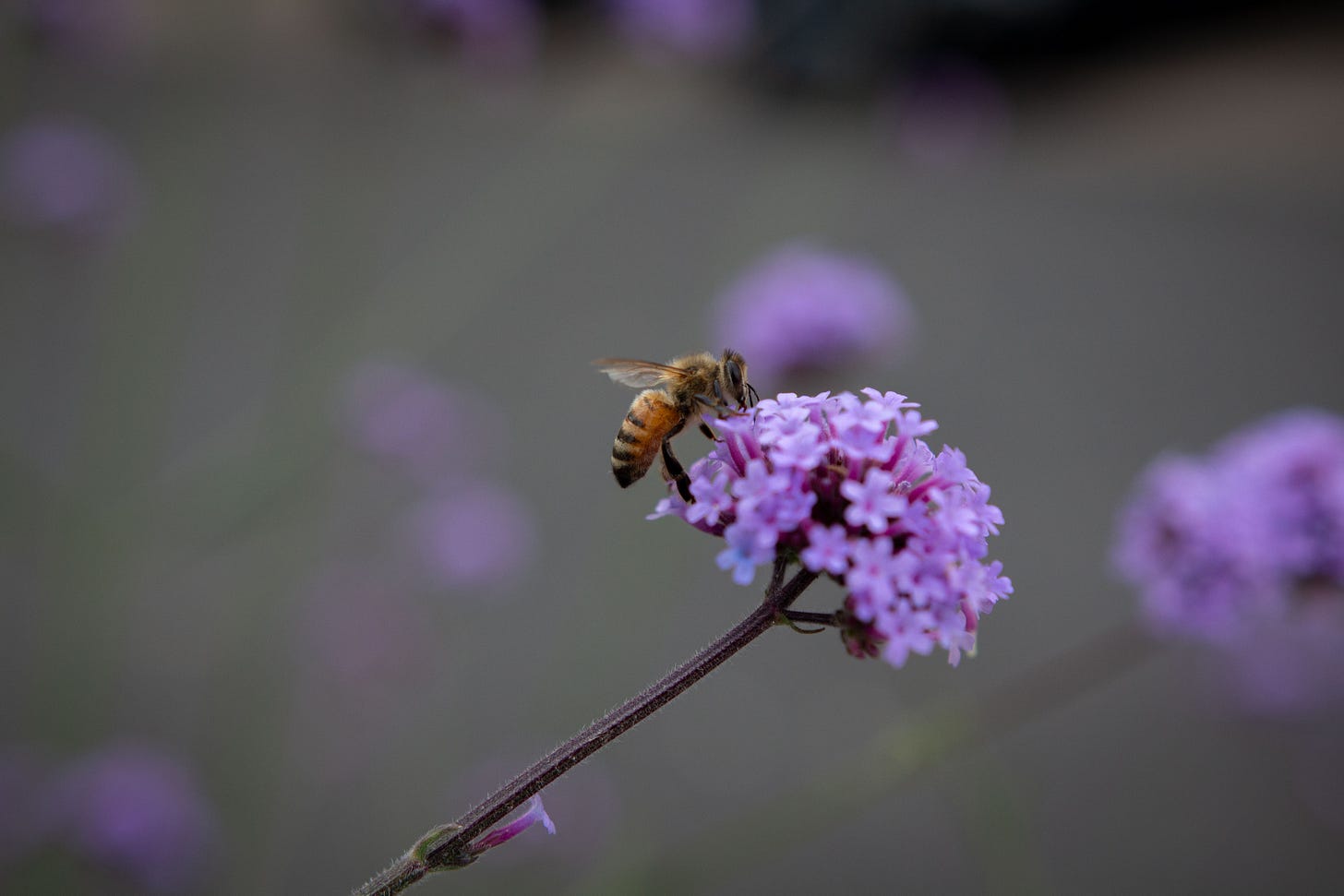Bumblebee spotting with friends
It's the simple things in life. 🐝
Last weekend I had the pleasure of attending a bumblebee identification course with London Wildlife Trust.
Led by the staff at Walthamstow Wetlands and a passionate volunteer, it was a brilliant two hours of getting stuck into the world of bumblebees.
Grey clouds and a little drizzle didn’t stop our furry friends coming out, and the wildflower meadows were alive with buff-tailed bumblebees, red-tailed bumblebees, common carder bees, and a few honeybees thrown in for good measure. If you fancy learning something new for yourself, the Bumblebee Conservation Trust has put together some handy factsheets to refer to.
There are over 270 species of bee in the UK, and 24 species of bumblebee. Sadly they’re nearly all in rapid decline. The short-haired bumblebee became extinct in the UK in 1989, but a reintroduction project has so far proved promising.
The reasons for the widespread decline of bumblebees is complex but similar to the decline of all other insects across the world: massive changes in the way we use our land. Mechanised agriculture, demand for unseasonal cheap food, pesticides, urbanisation, climate change and habitat destruction are just a few of the many threats facing all of nature today. Bumblebees are among the hardest working insects, and like all other bees are vital for the pollination of crops and the sustaining of healthy ecosystems.
I was excited and fortunate to spend a simple two hours in their company.
To just stand in a field with a group of strangers, looking for bees, switched off from a world of emails and notifications and endless scrolling, was a welcome change of pace and a reminder to focus on the present.
Spending time around people who share the same interests and passions as you is like food for the soul. And the place wasn’t packed with bee experts, either. Each person in the group, from wildly different backgrounds, was there for the simple shared love of bumblebees and the desire to learn more about them.
The enthusiasm and wonder the event organisers drummed up in the group was inspiring. When I set out to begin writing Urban Nature Diary, it was prompted by a desire to bridge the widening divide between humans and the natural world. To remind people that there’s an entire living universe right under our noses, on which we depend for our own wellbeing, just waiting to be discovered. So to be surrounded by people whose eyes were opened to tiny moments of natural beauty was thrilling.
We don’t have to understand something to protect it, but we do have to love it. Imagine what we would be inspired to fight for if we all spent two hours among the wildflowers and the bumblebees.
For the sake of five pounds I’d do it again in a heartbeat.
Find out what’s happening near you on the Wildlife Trusts website, and support the Bumblebee Conservation Trust in their efforts to protect these valuable creatures.




